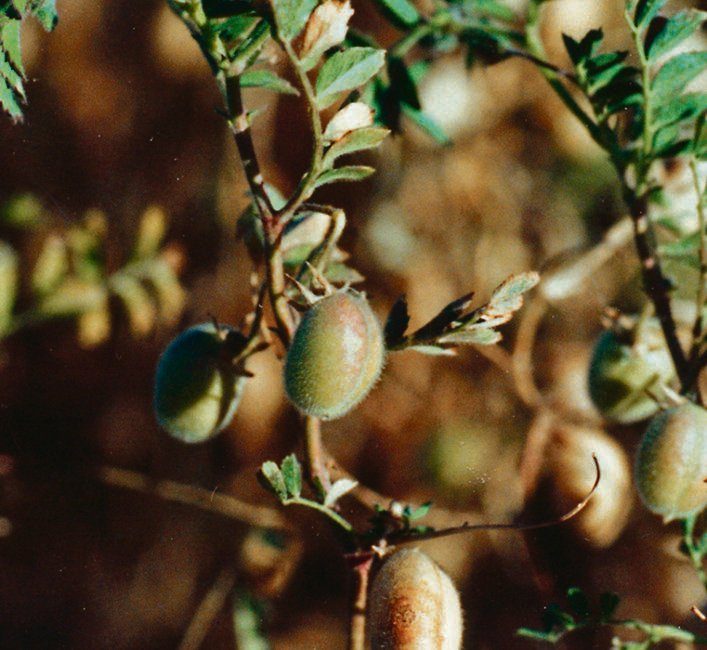Global chickpea export supplies tighten

Navneet Singh Chhabra’s presentation on the world’s leading kabuli chickpea exporters was like a broken record.
Total supplies for every exporter with the exception of Argentina are expected to be down in 2021-22 compared to the previous year.
For most suppliers, it is due to the combination of lower carryover from the previous year’s crop and reduced production prospects for this year.
“This is the golden statement of all this presentation,” he told delegates attending the Global Pulse Confederation’s virtual Pulses 2.1 conference.
The resulting short global supply situation is creating a firm price outlook for new crop kabuli chickpeas.
Demand will be down in 2020-21 because of ongoing COVID-19 restrictions and rationing caused by high prices.
However, the reduction in supply will be even greater, which is going to create upward price movement in the market in the second half of 2021, said Chhabra.
Russia is the world’s leading exporter of the crop. Total supplies are forecast at 284,000 tonnes, down slightly from last year because of a paltry 20,000 tonnes of carryout from the 2020-21 crop.
Exports are expected to fall 17 percent to 170,000 tonnes, and there will be another small carryout at the end of 2021-22.
Mexico is the second biggest exporter, shipping out large calibre kabulis to markets around the world.
Total supplies are forecast at 165,000 tonnes and exports are expected to fall 23 percent to 110,000 tonnes.
Joel Valenzuela, a trader with JOVA, said international buyers seem to be waiting for Mexican prices to drop, but that isn’t going to happen.
There are four large exporters in Mexico that buy all the product from farmers at harvest. They have the financial wherewithal and facilities to store the product for up to two years.
Those companies incurred big losses the past few years and will not be budging from the current asking price of US$1,400 per tonne for Mexican product.
In fact, he expects prices to rise to $1,600 per tonne this fall due to the looming shortage of the crop.
India’s supply is expected to plunge 32 percent to 396,000 tonnes due to low carryout and very poor production prospects for all of India’s rabi (winter) season crops.
Exports will fall to an estimated 50,000 tonnes, down from 115,000 tonnes each of the previous two years.
The situation is so dire that India is expected to import 50,000 tonnes from Canada, Argentina and Turkey.
Even with that injection of supplies, India will end the year with 36,000 tonnes of kabulis, which is a far cry from the 200,000 tonnes it needs to balance supply and demand the following year.
Chhabra said Indian kabuli chickpeas are over-priced because of the shortage and a doubling in freight costs caused by the shipping container crisis.
Argentina’s supplies are expected to climb slightly to 80,600 tonnes, but that’s only because volumes in 2020-21 were less than half of normal levels.
Exports will fall to 45,000 tonnes, down from 56,000 tonnes last year and 165,000 tonnes the year before that.
Turkey’s supplies are expected to fall 36 percent to 230,000 tonnes, creating a “very tight” situation.
Chhabra is forecasting 108,000 tonnes of exports, a 20 percent decline. However, that would result in a negative carryout of -43,000 tonnes, which is impossible.
So either exports would have to fall even further or the Turkish government will have to reduce its import duty and bring in product from other exporting countries, he said.
And that is all based on 190,000 tonnes of production, which is optimistic given the dry conditions in eastern Turkey. It could be more like 150,000 tonnes, said Chhabra.
Supplies in the United States are pegged at 371,000 tonnes, a 16 percent decline. An export program of 145,000 tonnes will result in 46,000 tonnes of carryout at the end of 2021-22.
“It means the U.S.A. will remain firm all year,” he said.
Canada’s supplies will plummet 22 percent to 386,000 tonnes because traders believe carryout from the previous year is much smaller than the government estimate of 350,000 tonnes.
Canada is the one market that will experience an increase in exports to 200,000 tonnes, a 40 percent hike over 2020-21 levels.
That is because Canadian farmers have been holding stocks because of low prices and are finally willing to sell, said Chhabra.
Pakistan is the world’s biggest buyer of kabuli chickpeas. It imported a whopping 383,000 tonnes of the crop in 2020.
About half of that amount was Russian kabulis that were being used as a substitute for desis. However, Australia has a much bigger crop of desis, which are price-competitive with Russian kabulis this year, so that business might evaporate.
The U.S. and Canada are expected to be major suppliers to Pakistan in the coming months.
Chhabra estimates the country will import another 100,000 tonnes over the next six to eight months.
Algeria is another top buyer of the crop. It imports mainly large calibre chickpeas from India and Mexico.
It purchased 65,000 tonnes in 2020 but may only buy 50,000 tonnes in 2021 because prices are too high, he said.
Contact sean.pratt@producer.com
Source: www.producer.com

